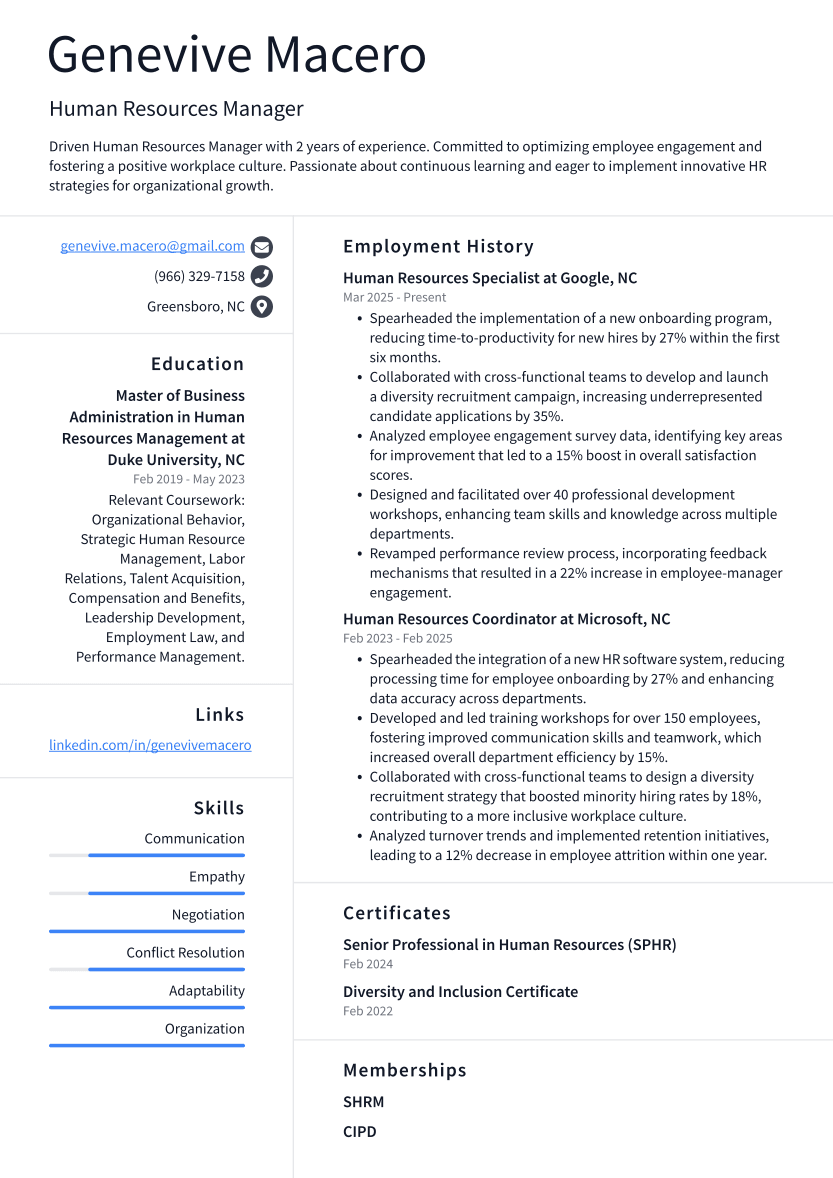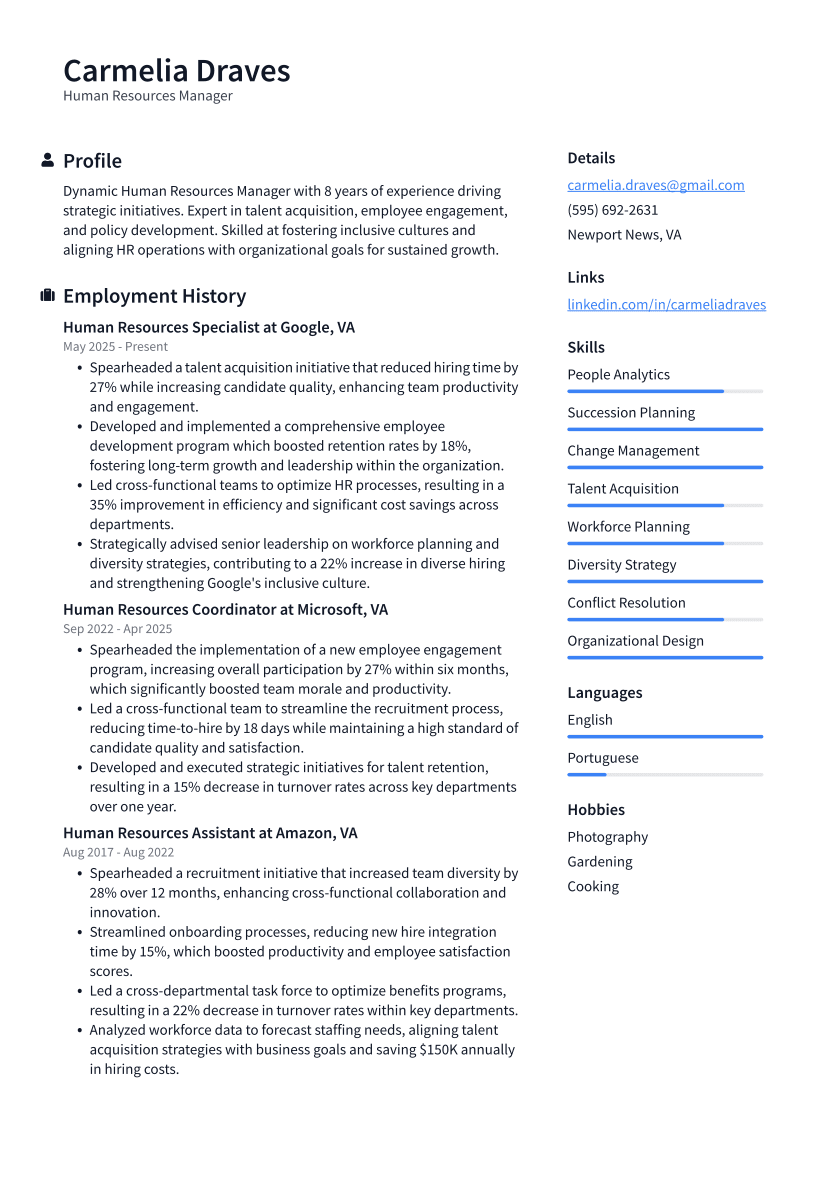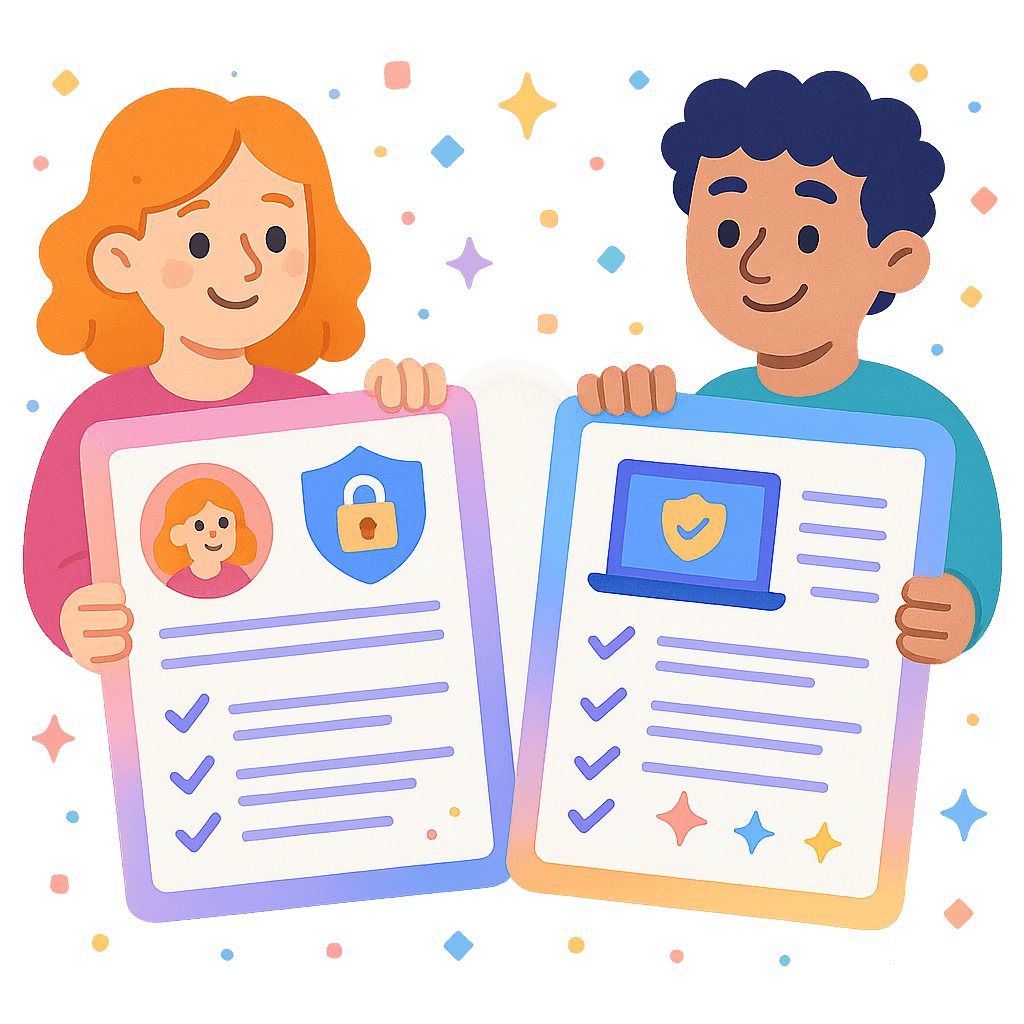Human Resources Manager Resume Examples

Crafting an impactful resume for a Human Resources Manager role is like finding the perfect balance between diplomacy and dynamism—no small task! This guide aims to decode the art of highlighting your expertise while keeping things fresh and relevant. Expect to uncover secret ingredients that make employers sit up and take notice, without resorting to magic spells or wishful thinking.
What to Include on a Human Resources Manager Resume
- Contact Information: Name, phone, email, and LinkedIn profile.
- Summary: Brief overview of qualifications and career goals.
- Work Experience: Previous roles, responsibilities, and achievements.
- Skills: Relevant abilities and competencies for HR management.
- Education: Degrees, certifications, and institutions attended.
- Professional Affiliations: Memberships in relevant HR associations.
- Certifications: HR-specific credentials and licenses obtained.
- Volunteer Experience: Relevant unpaid work and community involvement.
- Languages: Languages spoken and proficiency levels.
- Projects: Noteworthy HR initiatives or projects led.
For the experience section, emphasize your ability to develop and implement HR strategies that align with business goals, focusing on talent acquisition and employee retention. In the skills section, highlight your expertise in conflict resolution, performance management, and proficiency with HR software like Workday or SAP SuccessFactors.
Pro Tip: Crafting a Human Resources Manager resume with relevant skills and keywords is crucial for dancing through the digital gatekeepers of Applicant Tracking Systems, ensuring your experience and talents don't get lost in the shuffle.
How to Make Your Human Resources Manager Resume Stand Out
Transform achievements into compelling stories by spotlighting the tangible impact you made, like reducing turnover by 20% through innovative retention strategies or implementing a new training program that slashed onboarding time by 30%. Numbers speak volumes, so let them echo your success, painting not just a picture of what you did, but the ripple effect it had on the organization.
- Prioritize a clean, uncluttered design by using ample white space; it gives the eye room to breathe and helps essential information stand out effortlessly.
- Opt for a consistent font style and size throughout, such as a classic serif or sans-serif typeface, ensuring headings are bold or slightly larger for easy navigation.
- Utilize bullet points for listing accomplishments and responsibilities, allowing key details to catch the eye without requiring a deep dive into dense paragraphs.
Pro Tip: Tailoring your Human Resources Manager resume for each application highlights your specific skills and experiences that align with the job, making you stand out to potential employers.
Resume Example 1: Entry-Level Human Resources Manager
An entry-level Human Resources Manager resume focuses more on potential and educational background, while mid-level or senior resumes highlight extensive experience and achievements.
Resume Example 2: Experienced Human Resources Manager
A mid-level HR Manager resume balances experience and leadership, unlike entry-level resumes focused on skills, or senior resumes highlighting strategic achievements.
Resume Example 3: Senior/Leadership Human Resources Manager
A senior-level Human Resources Manager resume highlights strategic leadership and complex decision-making experience, often emphasizing expansive scope and impact, contrasted with entry-level or mid-level resumes that focus more on developing skills and acquiring foundational knowledge.
Human Resources Manager Resume Do’s, Don’ts, and Checklist
DO'S
- Highlight relevant experience that aligns with HR responsibilities and achievements.
- Incorporate specific metrics or examples to demonstrate your impact and effectiveness.
- Tailor the resume to match the job description, emphasizing skills and attributes sought by the employer.
DON'TS
- Don’t clutter the resume with irrelevant details that distract from core accomplishments.
- Don’t use vague job titles which may confuse the reader about your role or responsibilities.
- Don’t forget to include quantifiable achievements, as they highlight your impact.
CHECKLIST
- Highlight your leadership roles and achievements in previous positions.
- Incorporate measurable results to demonstrate your impact, like percentages or revenue increases.
- Include relevant certifications and professional affiliations to showcase industry knowledge.
- Tailor your resume to the specific role by using keywords from the job description.
- Showcase your ability to foster diverse and inclusive workplaces.
- Detail your experience with HR systems and technologies to emphasize technical skills.






